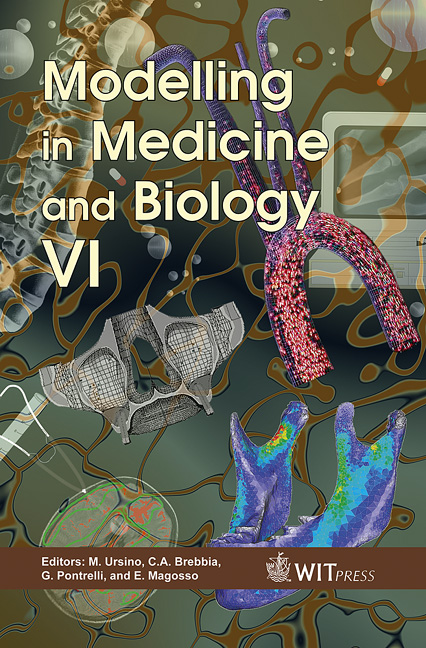Estimation Of Masticatory Forces For Patient-specific Analysis Of The Human Mandible
Price
Free (open access)
Transaction
Volume
8
Pages
10
Published
2005
Size
3,665 kb
Paper DOI
10.2495/BIO050471
Copyright
WIT Press
Author(s)
M. Koseki, N. Inou & K.Maki
Abstract
This paper proposes an estimationmethod of themasticatory forces using an objective function composed of three criteria: efficiency of muscular activities, moment balance between muscular and biting forces, and reaction forces at condyles. The method is applied to a patient whose jaw has a severe deformity, and the influence of the criteria is examined. The muscular forces of the numerical result with the consideration of all three criteria well agree to the analysis of EMG signals. Individual stress analysis under the estimated mechanical condition is also performed. There is no stress concentration and little difference in stress distribution on both left and right sides in spite of the asymmetrical mandibular shape and masticatory condition. The numerical result suggests mechanical adaptation of mandible by the masticatory forces. Keywords: muscular force, masticatory system, estimation method, finite element analysis, patient-specific model, objective function. 1 Introduction Patient-specific simulation with FEM is a significant technique for examination of biomechanical characteristics of bones. There are three important procedures to obtain reliable results in the FEM analysis: • Accurate modeling of the complex bony shape. • Proper setting of the material property. • Proper setting of the boundary conditions. In order to perform the first procedure, we proposed patient-specific modeling method based on X-ray CT images [1]. For the second procedure, we assigned Young’s moduli for each element of the model referring to the CT value [2].
Keywords
muscular force, masticatory system, estimation method, finite element analysis, patient-specific model, objective function.





